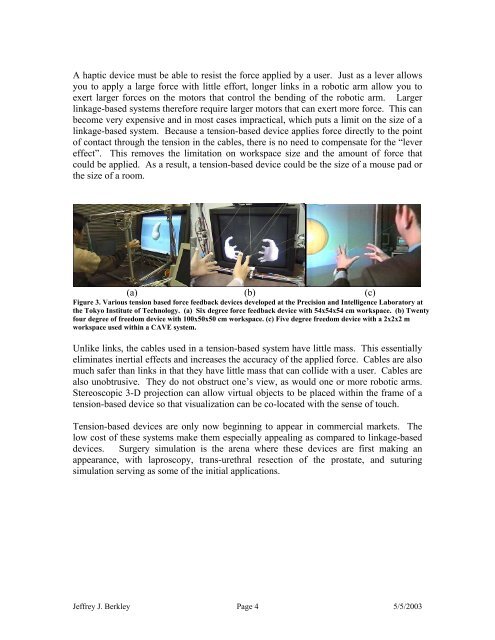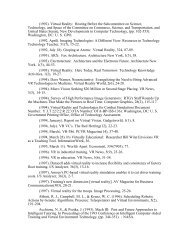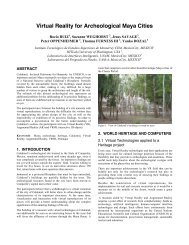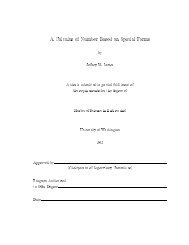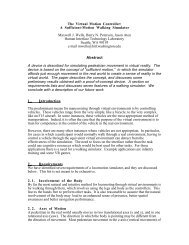Create successful ePaper yourself
Turn your PDF publications into a flip-book with our unique Google optimized e-Paper software.
A haptic device must be able to resist the force applied by a user. Just as a lever allows<br />
you to apply a large force with little effort, longer links in a robotic arm allow you to<br />
exert larger forces on the motors that control the bending of the robotic arm. Larger<br />
linkage-based systems therefore require larger motors that can exert more force. This can<br />
become very expensive and in most cases impractical, which puts a limit on the size of a<br />
linkage-based system. Because a tension-based device applies force directly to the point<br />
of contact through the tension in the cables, there is no need to compensate for the “lever<br />
effect”. This removes the limitation on workspace size and the amount of force that<br />
could be applied. As a result, a tension-based device could be the size of a mouse pad or<br />
the size of a room.<br />
(a) (b) (c)<br />
Figure 3. Various tension based force feedback devices developed at the Precision and Intelligence Laboratory at<br />
the Tokyo Institute of Technology. (a) Six degree force feedback device with 54x54x54 cm workspace. (b) Twenty<br />
four degree of freedom device with 100x50x50 cm workspace. (c) Five degree freedom device with a 2x2x2 m<br />
workspace used within a CAVE system.<br />
Unlike links, the cables used in a tension-based system have little mass. This essentially<br />
eliminates inertial effects and increases the accuracy of the applied force. Cables are also<br />
much safer than links in that they have little mass that can collide with a user. Cables are<br />
also unobtrusive. They do not obstruct one’s view, as would one or more robotic arms.<br />
Stereoscopic 3-D projection can allow virtual objects to be placed within the frame of a<br />
tension-based device so that visualization can be co-located with the sense of touch.<br />
Tension-based devices are only now beginning to appear in commercial markets. The<br />
low cost of these systems make them especially appealing as compared to linkage-based<br />
devices. Surgery simulation is the arena where these devices are first making an<br />
appearance, with laproscopy, trans-urethral resection of the prostate, and suturing<br />
simulation serving as some of the initial applications.<br />
Jeffrey J. Berkley Page 4 5/5/2003


